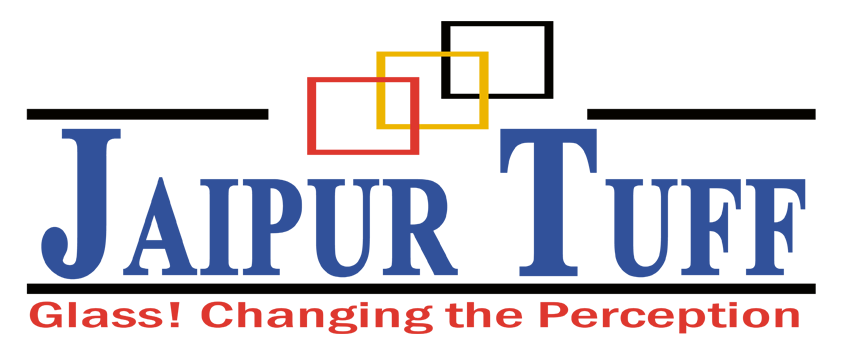Copyright © 2025 Jaipur Tuff. All rights reserved.
Ceramic fritted glass involves applying inorganic glaze (also known as ink) onto flat glass surfaces through techniques like screen printing, roller brush, or digital printing. The glaze is then dried, tempered, or thermally processed to permanently fuse it onto the glass, resulting in a highly functional and decorative glass product. It offers exceptional wear resistance and acid and alkali resistance. Ceramic fritted glass also offers the flexibility to create custom patterns based on specific customer preferences, available in a wide range of colors and patterns, including striped, mesh, and electric designs.
Traditional ceramic fritted glass is created through the process of silk screen printing, where inorganic, high-temperature ink is applied onto the glass using mesh screens. The ink is then fused onto the glass surface through a high-temperature firing process, ensuring its adhesion and durability. Silk screen printed glass typically features a single color and a single pattern. The production of mesh screens adds complexity to the overall operation, requiring meticulous design and precise execution. While the process may be more intricate, it results in glass with a consistent color and pattern, making it suitable for various applications in architecture and design.
Digital ceramic printing on glass is a cutting-edge technique that eliminates the need for traditional mechanical screen printing. Instead, it directly prints inorganic, high-temperature ink onto the glass surface using digital printing technology. Once tempered, the glass showcases unparalleled resistance to acid, alkali, corrosion, and weathering. Digital ceramic printing offers various colors and diverse pattern options without mesh screens. The process is relatively simple, and efficient, and allows for intricate and detailed designs. This innovative method provides glass with rich color variations, vibrant patterns, and excellent durability, making it a preferred choice for various applications.
Customization: Both processes enable the creation of customized patterns and designs that can be tailored to specific project requirements and design aesthetics.
Precision and Detail: Silk screen printing allows for precise control over the thickness and density of the ceramic frit layer, while digital printing ensures high-resolution detailing and photorealistic imagery.
Design Flexibility: Digital printing offers virtually unlimited design possibilities, allowing for the reproduction of intricate patterns, gradients, and even complex imagery.
Silk screen printing and digital printing are two key techniques used in the production of ceramic fritted glass. Each technique offers its own advantages in terms of customization, precision, design flexibility, and efficiency. Whether it’s intricate patterns, corporate branding, or unique designs, these printing techniques provide architects, designers, and glass manufacturers with the tools to create stunning and functional ceramic fritted glass solutions. The choice between silk screen printing and digital printing ultimately depends on the specific project requirements, design objectives, and budget considerations. With the versatility and possibilities offered by both techniques, ceramic fritted glass continues to push the boundaries of architectural glass applications.

Premier organization renowned for its exceptional expertise and outstanding achievements in the field of manufacturing industrial glass.
Copyright © 2025 Jaipur Tuff. All rights reserved.